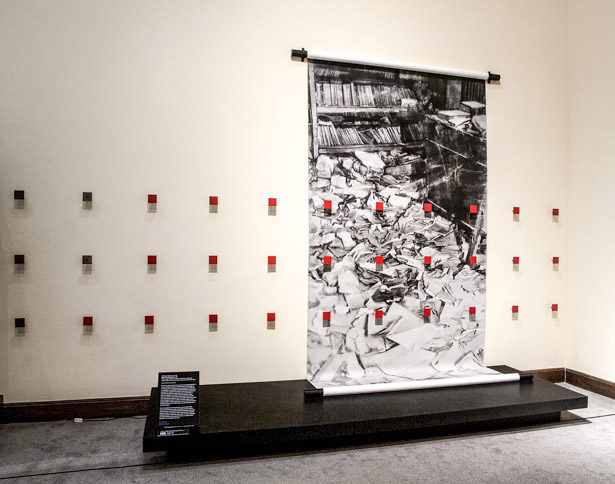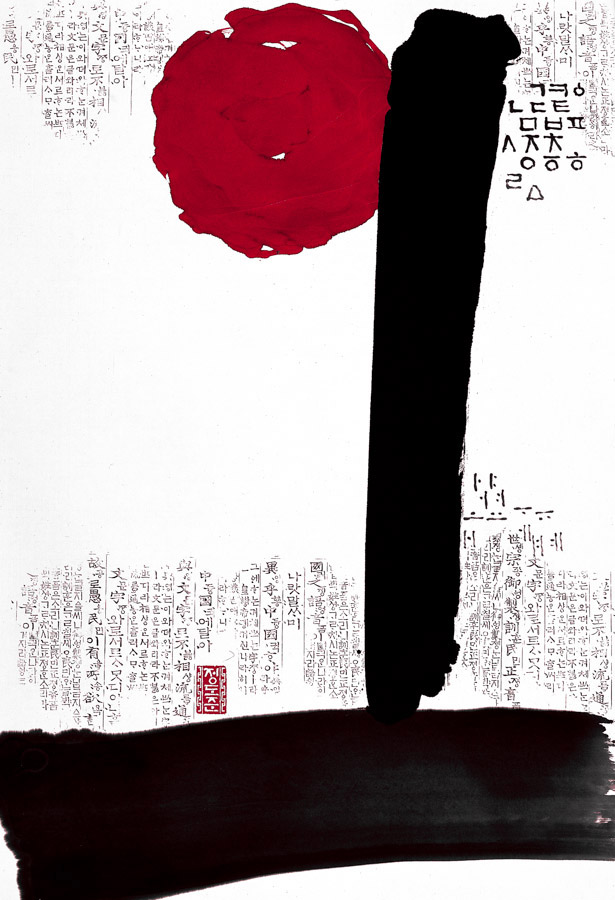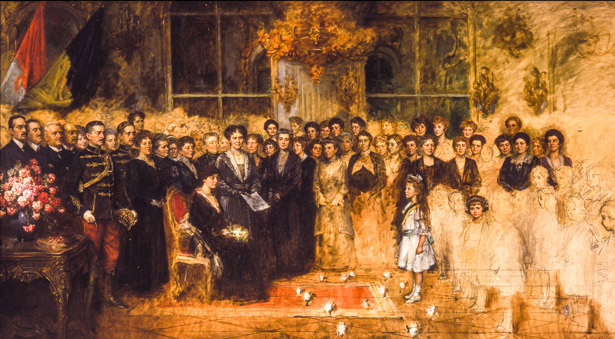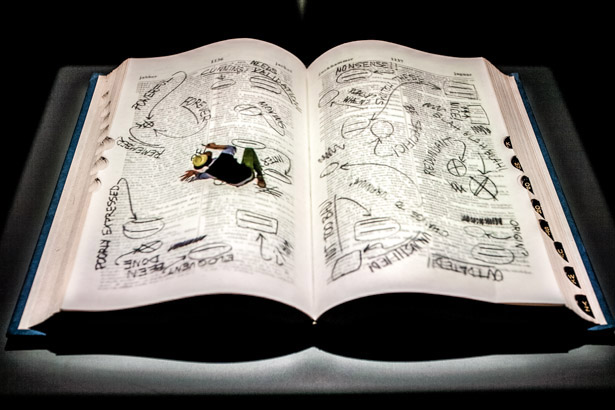At 80 years old, the UO’s Jordan Schnitzer Museum of Art is one of the hippest places to see art in the city. But it’s also a cavernous place with nooks and crannies rotating thousands of pieces that can overwhelm the senses. So, where to start? Here, we asked five curators at the JSMA to pick their favorite pieces currently on view and tell us why the works are special.

‘Order (The Red Guards)’ by Xiaoze Xie, 1999
Xiaoze Xie’s mixed media installation is an artwork you must see in person, because photographs cannot convey its scale or boldness. The painting depicts a photo-realistically rendered newspaper snapshot of the burning of books ordered during China’s Cultural Revolution, punctured by red metal spikes that symbolize the destructive march of Maoist Communism across China’s literary and cultural legacy. — Jessi DiTillio, assistant curator of Contemporary Art

‘Heaven, Earth, and Man’ by Jung Do-jun, 2006
This dramatic contemporary work incorporates the circle and the vertical and horizontal lines that comprise the basic hangul vowel elements. Applied with consummate skill using a heavily laden brush, calligrapher Jung Do-jun’s luminous red dot suggests the sun, while the vertical and horizontal strokes of black ink represent man and earth, respectively. — Anne Rose Kitagawa, chief curator

‘The Last Audience of the Hapsburgs’ by Artur van Ferraris, 1918
This unfinished painting depicts the last royal audience ever given by Empress Zita of the House of Hapsburg. It was smuggled into the U.S. during WW II when one of the women depicted in the work fled Austria’s and Hitler’s rule. For years it stayed hidden in a carpet roll until it was given to the JSMA. I love the drama and mystery surrounding this piece and the partially rendered figures are absolutely enchanting. — June Koehler, assistant curator for the Arts of the Americas and Europe

‘Book II’ by Peter Sarkisian, 2012
Sarkisian’s work is filled with intelligence, humor and, if I may use the word, magic. Viewers see a digital projection of a man crawling over the open pages of a dictionary, underlining words and writing others, sometimes disappearing into the book’s gutter. But how does the artist do this? It’s critical for museums to share new art forms with their constituencies, and Sarkisian is a new media innovator. — Jill Hartz, executive director

‘Leaving the Lecture: The Faculty Wives’ by Anne Kutka McCosh, 1936
Anne Kutka McCosh considered “Leaving the Lecture: The Faculty Wives” to be one of her best works. It is important in the context of Kutka McCosh’s career and personal growth as an artist, but equally important as a part of the UO’s cultural history. — Danielle Knapp, McCosh associate curator